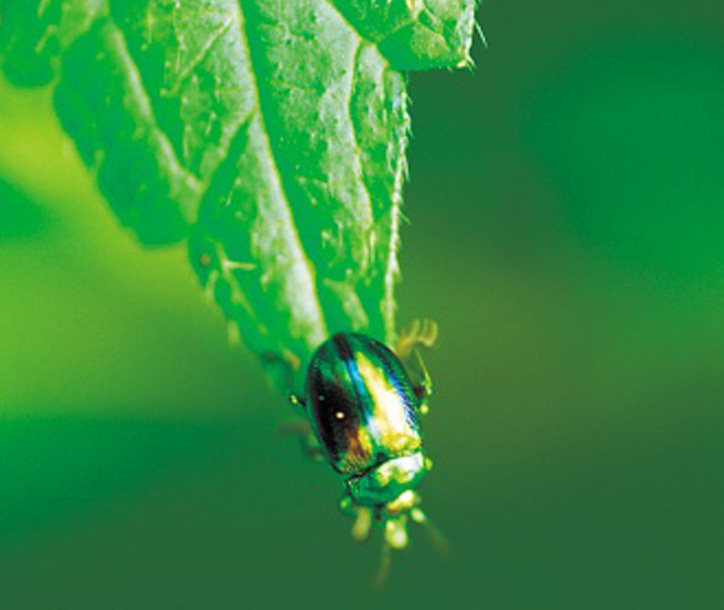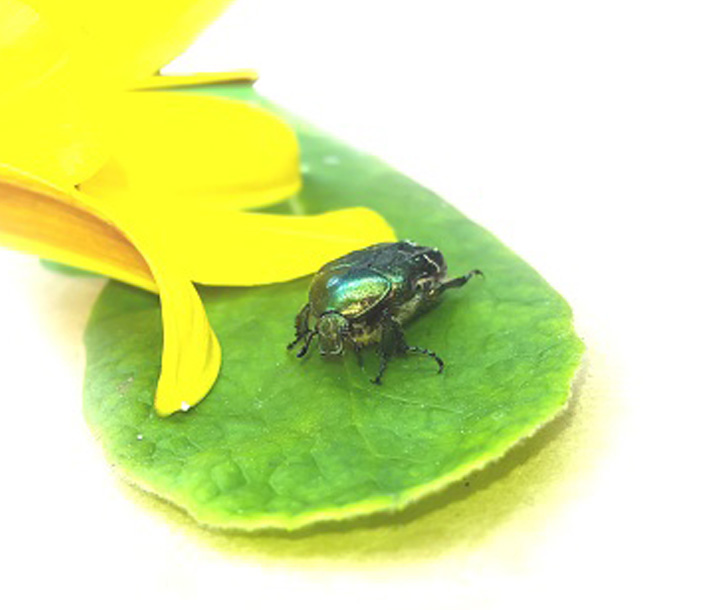At the end of summer, if you’ve noticed that your lawn has brown patches, and you see birds, skunks, and raccoons digging up your yard, then you may have grubs. These insects can damage your lawn and transform into beetles, which will then devour your plants. The proper grub treatment will greatly reduce lawn damage and stop the grub’s life cycle before becoming destructive beetles.
What Are Grubs?
Grubs are actually the larvae of beetles. (Common beetles in the Pittsburgh area include Japanese beetles, May/June beetles, and Oriental beetles.) Larvae are the immature form of insects, for example, a caterpillar that will one day be a butterfly. Grubs are fat, C-shaped, and white.
Beetles lay eggs in your lawn, and these eggs hatch into grubs. The grubs eat the roots of your grass, then go dormant in the winter. In the spring, when the weather starts getting warm, the grubs again eat grass roots as they get ready to change into pupae, and later, destructive beetles.
How Do I Know That Grubs Are Present in My Lawn?
First, sections of your lawn may feel soft or even spongy. Then, you may see that your grass has brown patches and has begun to wilt. Of course, there are other causes for these irregular-looking patches, but another sign is that you’ll see dug-up areas around your yard. Animals such as birds and raccoons find grubs to be tasty and will dig through grass and soil to find their meal.
You can also pull up some of your lawn and look at the soil. Grubs are small, but easy to spot due to their white C-shape.
The grubs usually hatch from late August through October, and it is when they’re most active. That’s why it is important to add preventative grub control treatments to your lawn service.
Are Grubs Destructive?
Yes, grubs can cause damage to your yard in several ways. First, in the grub stage, they damage your lawn by eating the roots of the grass. Then, if grubs aren’t eliminated, they will turn into beetles. In this adult stage, they eat plants including rose, plums, and cherries.
How Can I Control Grubs and Beetles?
You shouldn’t wait to see if you get grubs. By the time you see the brown patches in your lawn, the grubs are already active and causing damage to your grass. Curative grub control can be applied at that time, but the damage to your lawn may be costly to repair.
Instead, it’s best to be proactive with these harmful pests. The preventative application of grub control in the summer is insurance for your lawn. Superior Lawn Care will apply this in the summer to break the life cycle of the beetles before they can lay eggs, grow into grubs, and then become beetles, which will once again lay eggs.
Call Superior Lawn Care today to learn more about preventative grub control. We service anywhere in southwestern PA, including Peters Township Cranberry, Murrsyville, North Huntington, Indiana, Wexford, and Penn Township.




